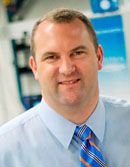The LCGC Blog: Where Are the Young Investigators in Separation Science?
One of the initiatives that the SCSC oversees is the nomination process and awarding of the Satinder Ahuja Award for Young Investigators in Separation Science. Where are all of the young investigators in separation science? Certainly, those that have been honored to date have been worthy; however, there must be more eligible parties out there.
Toward the end of last year, I joined the Executive Committee for the American Chemical Society (ACS), Division of Analytical Chemistry (DAC), Subdivision on Chemical Separations and Chromatography (SCSC). I have been attending the yearly ACS DAC SCSC Pittcon meetings for several years, always incredulous about its long abbreviation, and finally decided it was time to officially lend a helping hand. This organization with thousands of members needs a little help connecting back to its constituents; the current leadership team is working avidly to try to increase and raise awareness for the resources it can provide, and to find the best ways to communicate these potential benefits.
One of the initiatives that the SCSC oversees is the nomination process and awarding of the Satinder Ahuja Award for Young Investigators in Separation Science (http://analyticaldivision.sites.acs.org/younginvestigator.htm). I am honored to be on the list of past awardees (Table I), and I think many will agree that this list consists of strong contributors to separation science-most have grown to be clear leaders in the field.
Table I: Past recipients of the Satinder Ahuja Award for Young Investigators in Separation Science
Year
Recipient
2004
Andre M. Striegel
2005
Michael T. Bowser
2006
Christopher Culbertson
2007
Adam T. Woolley
2008
Nelson Torto
2009
Craig A. Aspinwall
2010
Philip Britz-McKibbin
2011
Jared L. Anderson
2012
Kevin A. Schug
2013
Michael Roper
2014
Dwight R. Stoll
2015
Matthew Miller
2016
Omar K. Farba
2017
Zachary Breitbach
Surprisingly, the SCSC has had fewer than desirable numbers of nominations for this prestigious award in the past couple of years. Where are all of the young investigators in separation science? I expect there are myriad reasons for these low numbers, including perhaps limited advertising of the opportunity, but we would like to change that. Certainly, those that have been honored to date have been worthy; however, there must be more eligible parties out there.
I hope this dearth of nominations isn’t pointing to a larger issue. I have been surprised over the past many years about some universities’ views of pure analytical chemistry as a discipline. I know specific instances of eminent pure separation scientists and analytical chemistry professors retiring, only to be replaced by faculty who “heavily use analytical techniques,” but are really chemists of another flavor masquerading as analytical chemists. In my opinion, these “users,” though they might net quality research support, could be doing our students a disservice.
What will 80% of bachelor’s degree graduates do when they enter the workforce? Certainly, there will be a lot of sample preparation. How many of the aforementioned “users” are adequately teaching their students about the steps involved with solid-phase extraction (SPE) or other practical tools? Such processes are not difficult, but they are essential to follow. Anyone can follow a textbook and reasonably communicate the material contained therein. However, without the relevance of specific examples-there are many ways to use an SPE cartridge for cleanup, purification, and fractionation-will this information be well retained by the students?
If we look forward a few years, many of these students could be the next Young Investigator in Separation Science, but without the proper instruction and mentoring, they may not gain the appreciation or interest to delve into fundamental analytical topics, such as chromatographic retention mechanisms, as a career.
We all know that analytical chemistry is an essential discipline to the chemical sciences, broadly defined. Chemical separations are a huge part of analytical chemistry. It is very disconcerting to me that those outside analytical chemistry would simply consider it as an applied discipline, devoid of fundamental research. I think such a viewpoint would be extremely easy to debunk, based on the research we see coming from what one might consider as pure analytical chemistry groups.
Perhaps some aspect of circling the wagons to nurture and raise the next generation of separation scientists needs to be given more attention. The SCSC would like to help recognize those efforts. So, if you are a mentor of an exceptional up and coming separation scientist, or if you are one yourself, put a hat in the ring so that these people can be recognized and further grow in our community. While you are thinking about that, please join the “ACS SCSC” LinkedIn group to better stay connected to the most recent news and updates. We want to make recognizing these individuals a priority, because it is important for the continued development of our field. Award nominations are due Nov. 1, 2018. Thanks for considering.

Kevin A. Schug is a Full Professor and Shimadzu Distinguished Professor of Analytical Chemistry in the Department of Chemistry & Biochemistry at The University of Texas (UT) at Arlington. He joined the faculty at UT Arlington in 2005 after completing a Ph.D. in Chemistry at Virginia Tech under the direction of Prof. Harold M. McNair and a post-doctoral fellowship at the University of Vienna under Prof. Wolfgang Lindner. Research in the Schug group spans fundamental and applied areas of separation science and mass spectrometry. Schug was named the LCGC Emerging Leader in Chromatography in 2009 and the 2012 American Chemical Society Division of Analytical Chemistry Young Investigator in Separation Science. He is a fellow of both the U.T. Arlington and U.T. System-Wide Academies of Distinguished Teachers.
The LCGC Blog: Historical (Analytical) Chemistry Landmarks
November 1st 2024The American Chemical Society’s National Historic Chemical Landmarks program highlights sites and people that are important to the field of chemistry. How are analytical chemistry and separation science recognized within this program?
